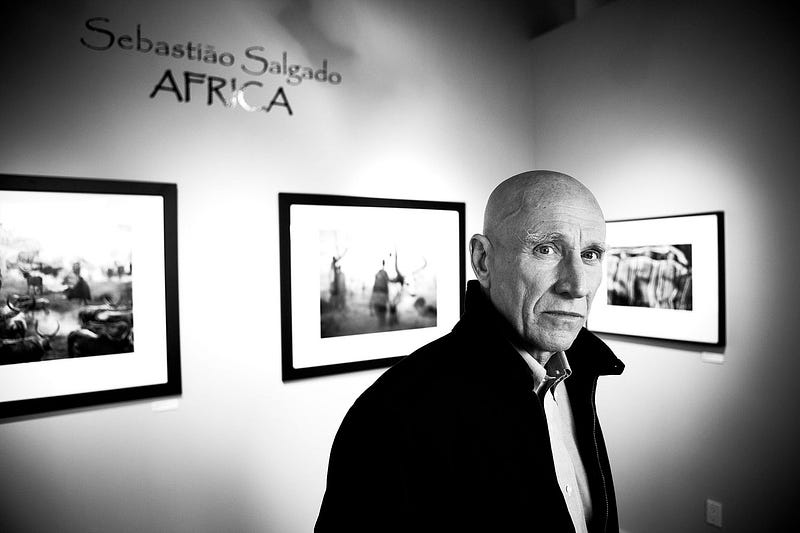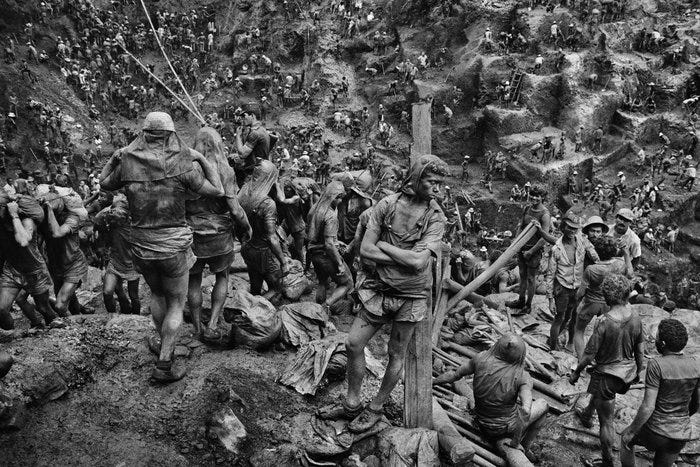

Ola El Hati Khalaf مع Yahya Massad

Sebastião Salgado’s Advice For Young Photographers Today
Last weekend at Photo London I had the chance to attend a lecture with Sebastião Salgado. Leo Johnson interviewed the 71-year old photographer about his life and work. In the Q&A that followed a young student, probably around 21 years old, asked what he would recommend a young photographer to start his career today. And Salgado answered:
“If you’re young and have the time, go and study. Study anthropology, sociology, economy, geopolitics. Study so that you’re actually able to understand what you’re photographing. What you can photograph and what you should photograph.”
I found this answer very interesting. Many photographers have an answer to that question, and I myself have asked it many times. The most common answer I got was “Just go out there and shoot” or “Study the masters of photography” or “Practice, practice, practice”. But none of these photographers talked about going to university and study economics. So what does Salgado mean by that?
Sebastião’s Salgado’s own biography sheds a light on the answer. Salgado, the only son of a farmer’s family with 7 daughters (all named Maria, but that’s another story), fought the military dictatorship in his home country Brazil, studied economics, emigrated to Paris and worked at the International Coffee Organisation there, which often let him travel to Africa.
Only when he was in his late 20s did he get a camera and start taking photos. He quit his job and began travelling the world, often staying in far-away places for 4 to 5 months to work on his reportages, thousands of miles away from his wife and young son in Paris. He dedicated his life to the stories he told through his lens. Salgado refuses to be called a documentary photographer or photojournalist. His life is photography, he says. His biography proves it.

What becomes so obvious in Salgado’s early work is that his pictures couldn’t exist without his commitment to social justice. What he photographs is defined by what he believes in. His pictures are so strong because he knows exactly what he’s doing. If he would have been just some guy who happens to be at a place where social injustice is happening, he couldn’t have captured it in the same way. He would have been an observer, a tourist, but could not have told those stories from the inside out.
In this context should his current work be understood. You could walk into an exhibition of Genesis and think “Oh, these are nice photos of nature I’m seeing here”. Or you could think that Salgado is tired of seeing the world’s pain and sorrow and retired to nature photography in his old days. But it’s the opposite. Salgado understood that the planet’s environment is probably the most pressing and universal issue of our time. That’s what Genesis is about. And if you read it this way, it might be just the start of Salgado’s most powerful, most meaningful and impactful work.
This is not big news. It’s the ultimate message of Wim Wenders and Julian Salgado’s recent film The Salt of the Earth. But I believe that’s possibly why this movie was made in the first place. Salgado wants his message to be understood.
What does it mean for aspiring photographers?
Understand what you want to shoot. Understand the impact your work could have. Study what makes the world move. Don’t just be a guy with a camera, because we all are.
One of the most touching moments in Salgado’s talk was when he mentioned was how hard it was for him to be away from his family. Away for months in the mountains of Brazil, his wife Lélia and son were in Paris. On a Sunday, Salgado climbed a mountain and burst out in tears. He couldn’t change the situation. Travelling took weeks. There was no money. He had to stay to finish his work.
This dedication is what makes a photographer to Salgado. Now that we all take pictures every day, are surrounded by images, we tend to forget that. Yes, we all are photographers today. But few of us are ready to make the sacrifice it takes to truly tell the stories that matter.


